Investigation of the cytotoxicity, apoptosis and pharmacokinetics of Raddeanin A
- Authors:
- Guiying Gu
- Huanhuan Qi
- Tianyue Jiang
- Bo Ma
- Zheng Fang
- Hong Xu
- Qi Zhang
-
View Affiliations
Affiliations: School of Pharmaceutical Sciences, Nanjing Tech University, Nanjing, Jiangsu 210009, P.R. China, School of Biotechnology and Pharmaceutical Engineering, Nanjing Tech University, Nanjing, Jiangsu 210009, P.R. China, College of Food Science and Light Industry, Nanjing Tech University, Nanjing, Jiangsu 210009, P.R. China
- Published online on: January 11, 2017 https://doi.org/10.3892/ol.2017.5588
-
Pages:
1365-1369
Metrics:
Total
Views: 0 (Spandidos Publications: | PMC Statistics:
)
Metrics:
Total PDF Downloads: 0 (Spandidos Publications: | PMC Statistics:
)
This article is mentioned in:
Abstract
Raddeanin A, one of the triterpenoid saponins extracted from Anemone raddeana rhizome of the Ranunculaceae family, has demonstrated the ability to inhibit the growth of human hepatic and gastric cancer cells. However, the effects of Raddeanin A on human colon cancer cells have not been investigated extensively. The present study aimed to examine the antiproliferative and apoptosis‑inducing effects of Raddeanin A on the HCT‑116 human colon cancer cell line in vitro, and evaluate the pharmacokinetic and biodistribution properties of Raddeanin A in mice following a single oral administration. A 3‑(4,5‑dimethylthiazol‑2‑yl)‑2,5‑diphenyltetrazolium bromide assay was used to assess the in vitro cytotoxicity of Raddeanin A against HCT‑116 cells. 4',6‑Diamidino‑2‑phenylindole, dihydrochloride staining and flow cytometry were performed to further examine the apoptosis‑inducing capability of Raddeanin A. The concentrations of Raddeanin A in the plasma and tissues were analyzed using liquid chromatography‑tandem mass spectrometry. Raddeanin A showed a dose‑dependent antiproliferative effect towards the HCT‑116 cells, with a half maximal inhibitory concentration of ~1.4 µM. Treatment with Raddeanin A resulted in a significant induction of apoptosis, observed as apparent morphological changes of the nuclei, with a total apoptotic ratio of 41.8% at a concentration of 3 µM. Low concentrations of Raddeanin A were detected in the heart, liver, spleen, lung, kidney and plasma of the mice following oral administration, however, the majority of the Raddeanin A was distributed in the intestinal tract, particularly in the colon and caecum. These present study confirmed the growth‑inhibitory and apoptosis‑inducing effects of Raddeanin A on HCT‑116 cells and performed preliminary examinations of its pharmacokinetic properties, which provide a foundation for further investigating the inhibitory mechanism on the colon cancer cells in vivo.
View Figures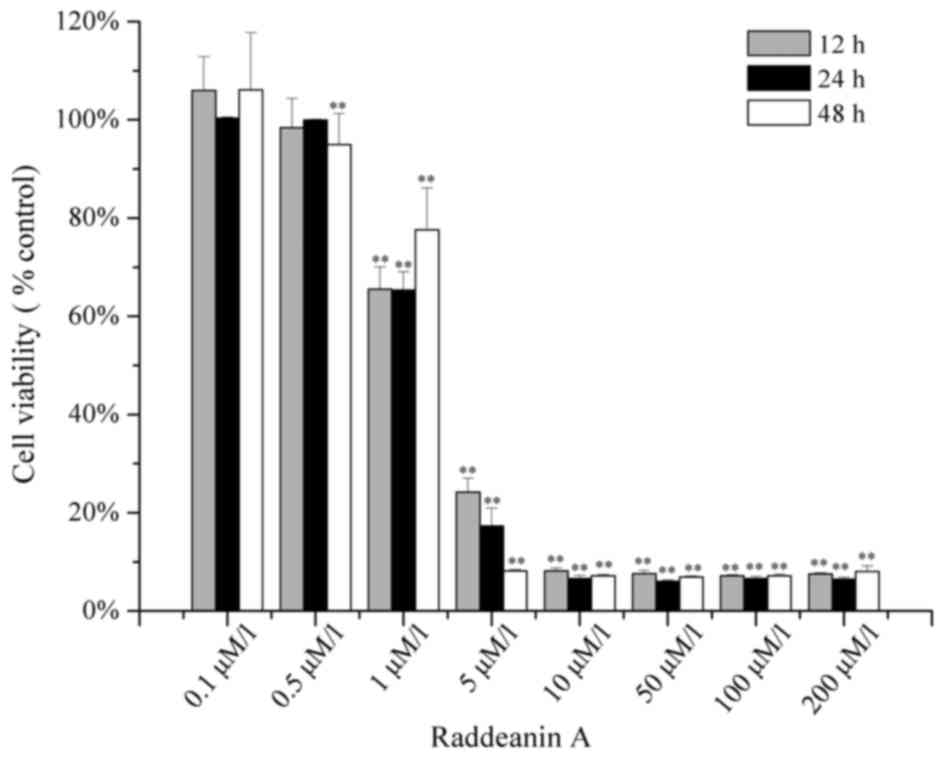 |
Figure 1
|
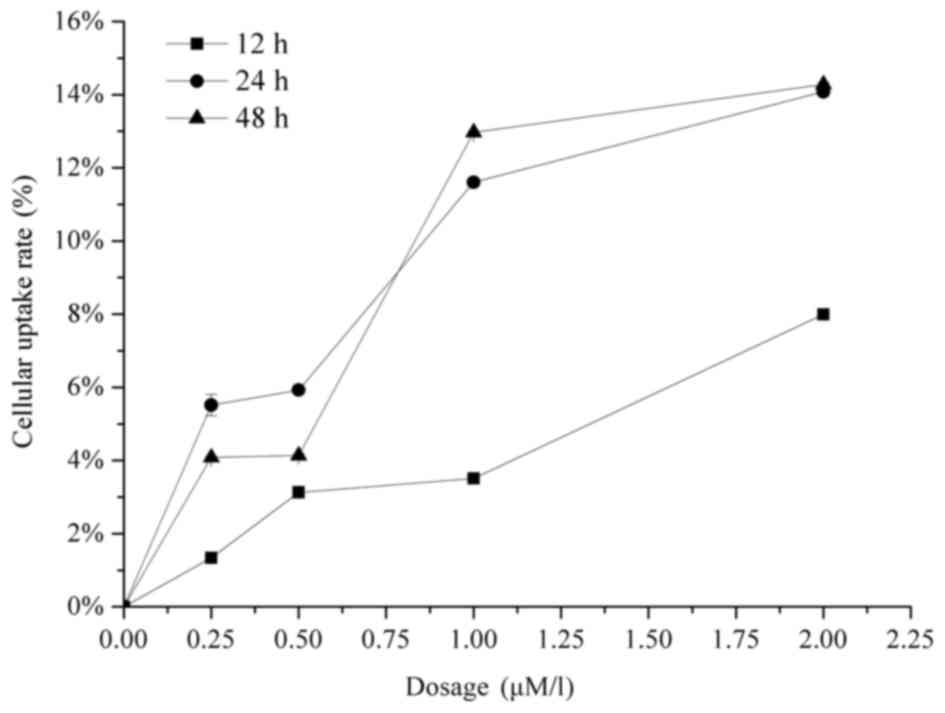 |
Figure 2
|
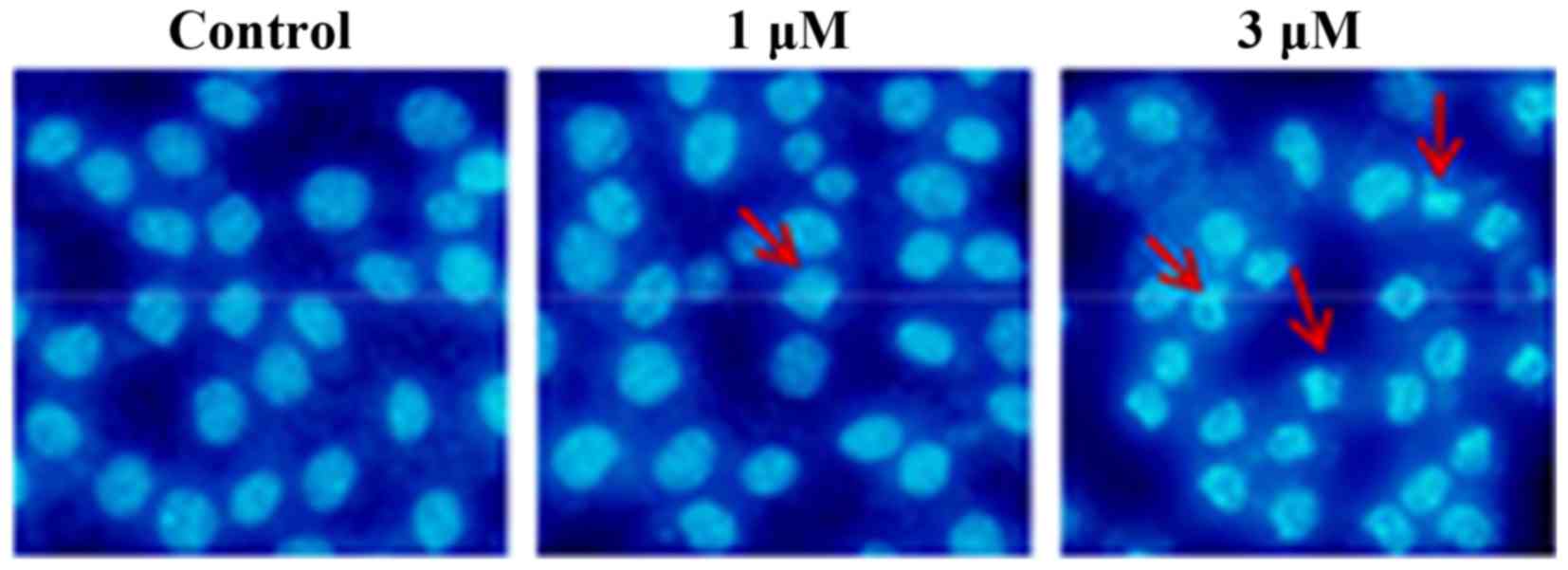 |
Figure 3
|
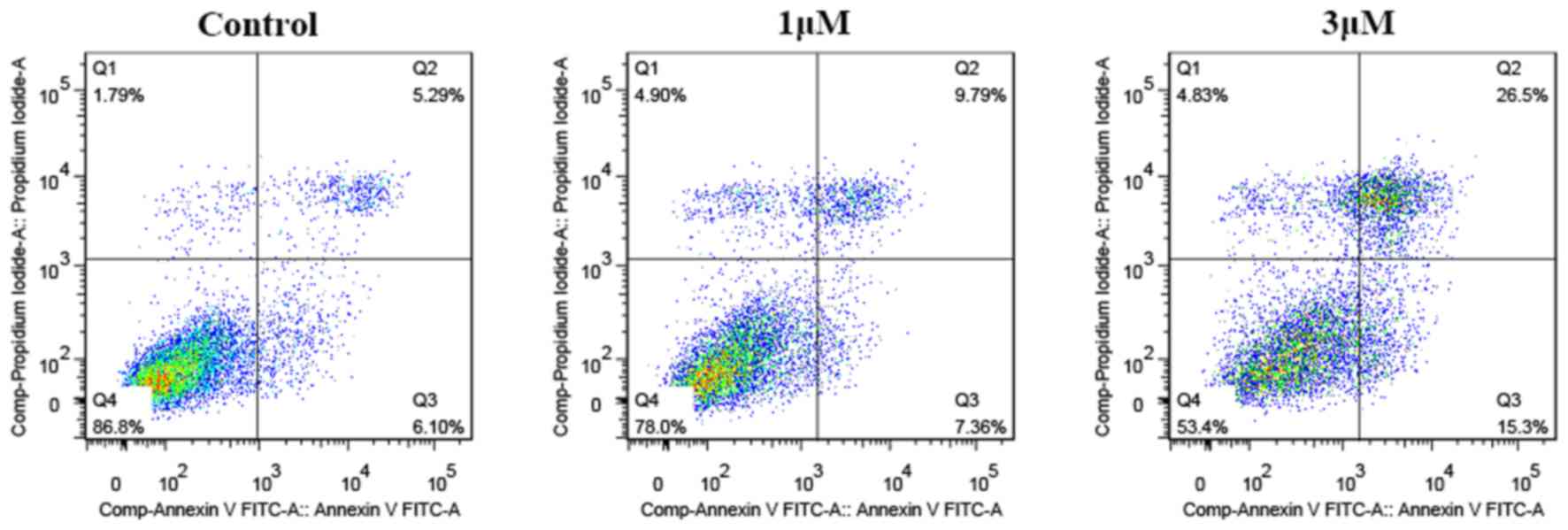 |
Figure 4
|
 |
Figure 5
|
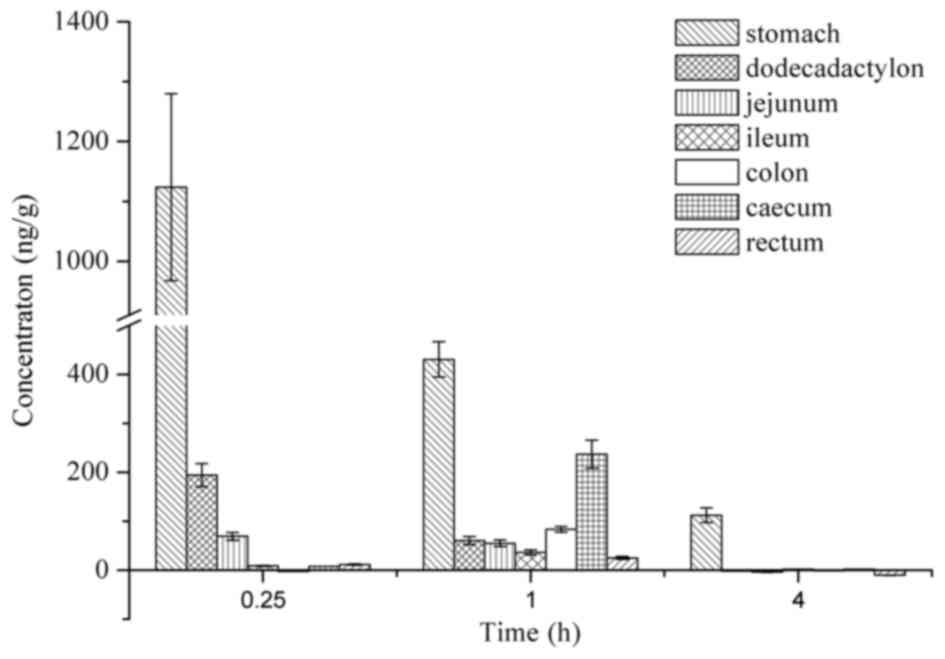 |
Figure 6
|
View References
|
1
|
Cao P, Wu FE and Ding LS: Advances in the
studies on the chemical constituents and biologic activities for
anemone species. Nat Prod Res Dev. 16:581–584, 520. 2004.
|
|
2
|
Zhang JM, Cao L and Wu ZM: Studies on
anticancer activities of triterpenoid in Anemone raddeana Regel.
Chinese J New Drugs. 12:191–193. 2003.(In Chinese).
|
|
3
|
Ma M, Li DL, Zhao DY, et al: Study the
effect of raddeanin A on the proliferation of human hepatic cancer
in nude mice. Drug Eval Res. 01:40–43. 2015.(In Chinese).
|
|
4
|
Xue G, Zou X, Zhou JY, Sun W, Wu J, Xu JL
and Wang RP: Raddeanin A induces human gastric cancer cells
apoptosis and inhibits their invasion in vitro. Biochem Biophys Res
Commun. 439:196–202. 2013. View Article : Google Scholar : PubMed/NCBI
|
|
5
|
Wang MK, Ding LS and Wu FE: Antitumor
effects of raddeanin A on S180, H22 and U14 cell xenografts in
mice. Ai Zheng. 27:910–913. 2008.(In Chinese). PubMed/NCBI
|
|
6
|
Sun C, Li Q, Pan L, Liu B, Gu P, Zhang J,
Ding L and Wu C: Development of a highly sensitive LC-MS/MS method
for simultaneous determination of rupatadine and its two active
metabolites in human plasma: Application to a clinical
pharmacokinetic study. J Pharm Biomed Anal. 111:163–168. 2015.
View Article : Google Scholar : PubMed/NCBI
|
|
7
|
Liu Y, Ma B, Zhang Q, Ying H, Li J, Xu Q,
Wu D and Wang Y: Development and validation of a sensitive liquid
chromatography/tandem mass spectrometry method for the
determination of raddeanin A in rat plasma and its application to a
pharmacokinetic study. J Chromatogr B Analyt Technol Biomed Life
Sci. 912:16–23. 2013. View Article : Google Scholar : PubMed/NCBI
|
|
8
|
Cao J, Li W, Tang Y, Zhang X, Li W and
Zhao Y: Three new triterpene saponins from Actinostemma lobatum
MAXIM and their cytotoxicity in vitro. Phytochem Lett. 11:301–305.
2015. View Article : Google Scholar
|
|
9
|
Zhou HL, Shun YX, Li Y, Wang B and Liu DY:
Progress in Studies on Chemical Constituents and Pharmacological
Effect of Anemone raddeana Regel. Lisizhen Medicine and Materia
Medica Research. 05:1239–1241. 2007.(In Chinese).
|
















